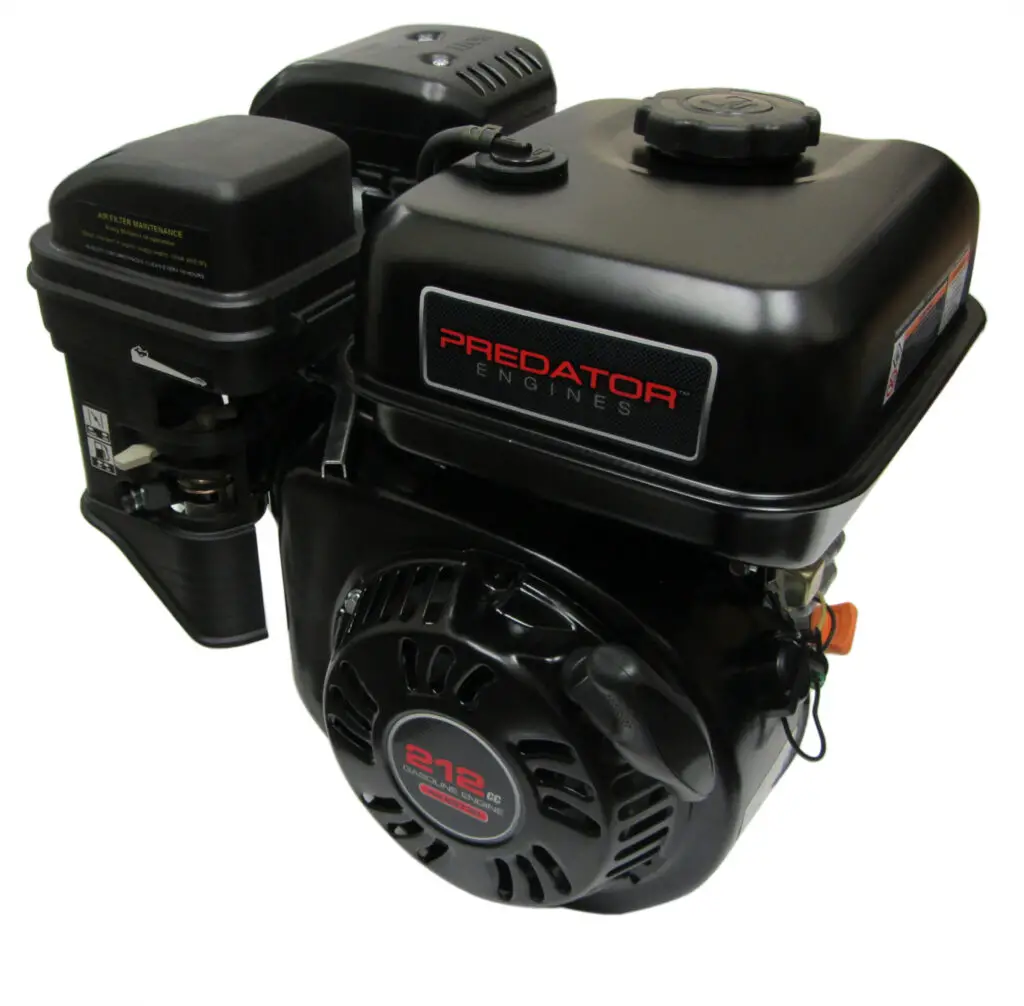Predator 212 Hemi vs Non-Hemi: Which is better for you
Predator Engines are the most value-for-money small engine available on the market, with easily available performance parts and loads of information available on the internet about these Engines. But which one to get? Hemi or Non-Hemi?
Get the Hemi engine if you’re going to use it out of the box with no modifications made, it will produce ~0.3 hp more power out of the box. Get a Non-Hemi Engine if you’re planning to do any modification. You can get the Non-Hemi engine to perform better without much machining.
Overall, it will cost you less time and money to modify a Non-Hemi engine to perform better. Read on for a more in-depth explanation.
Engine Specs:
The key specs, such as the max torque, max power, weight, dimensions, etc of the 2 engines are almost the same.
How to identify them?
The easiest way to tell them apart visually is through the difference in their valve cover. The Hemi engine has a rectangular type valve cover and the non-Hemi has an octagon-shaped cover, refer to the image below.
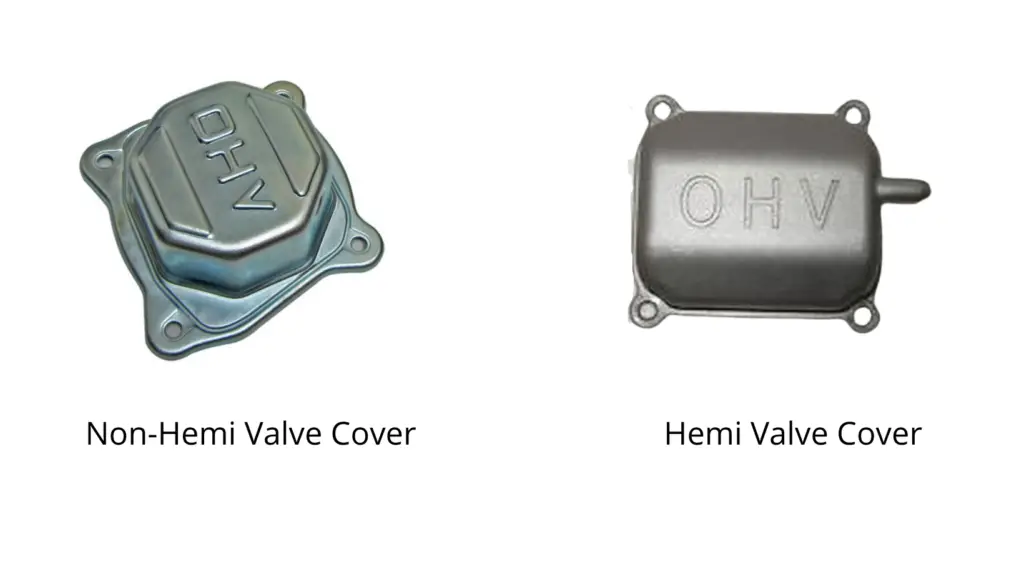
If you’re going to buy from a store, you can use the above image as a reference, if for some reason you cannot visually check the engine, you can also tell them apart by their part number. #60363 – is a Hemi, 69730 – is a Non-Hemi (EPA approved non-hemi is #69727).
The major differences between Hemi and non-Hemi
They might look very similar if you compare the specs but both engines are very different internally!
Power and RPM
Out of the box, both the engines will make 3600 rpm but the Hemi engine will be making a little more power and torque in comparison to the non-hemi engine. With governor removed though, you can expect similar performance in both the engines.
When you start to go further down the road of performance upgrade, this is when non-hemi is a clear winner.
In the non-hemi, you can use +0.40″ rods, cams with longer duration and higher lift, heavier valve springs, etc. In simple terms, you can get more power and rpm out of non-hemi if you change some of the parts.
Cylinder Head
When we talk about the differences in parts, the cylinder head is the biggest difference between hemi and non-hemi.
The hemi is called “hemi” because it has a hemispherical combustion chamber, while the non-hemi has a flat combustion chamber. The image below shows the hemi engine.

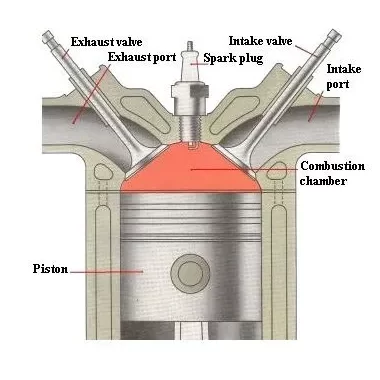
First, I’ll give a little context on what these parts are doing during the 4 strokes. How this whole system works is a vast topic in itself and will require an understanding of other parts and their workings.
But to give you a brief summary, when the engine starts, the intake valve will move towards the engine’s combustion chamber allowing the air-fuel mixture to enter the chamber from the intake port.
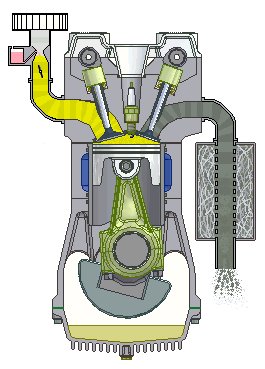
After that, there is compression stroke and power strokes in which the mixture is compressed and burned with the help of the spark from the spark plug, then the exhaust valve opens and allows the burned gas to go out through the exhaust port.
In the Hemi engine, the valves at the time of opening will come in at an angle towards the piston, whereas the Non-Hemi engine will come in perpendicular to the piston. (Hemi engine’s working can be seen in the animation above)
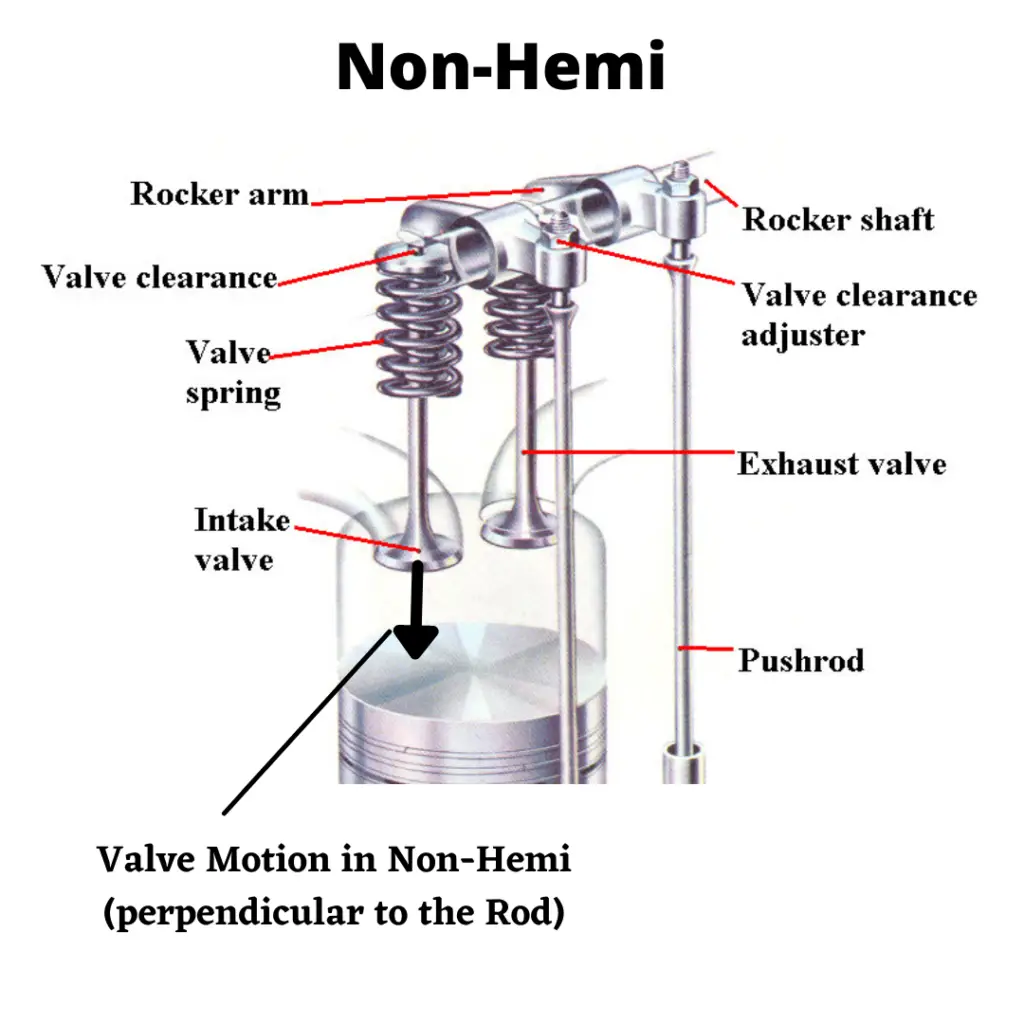
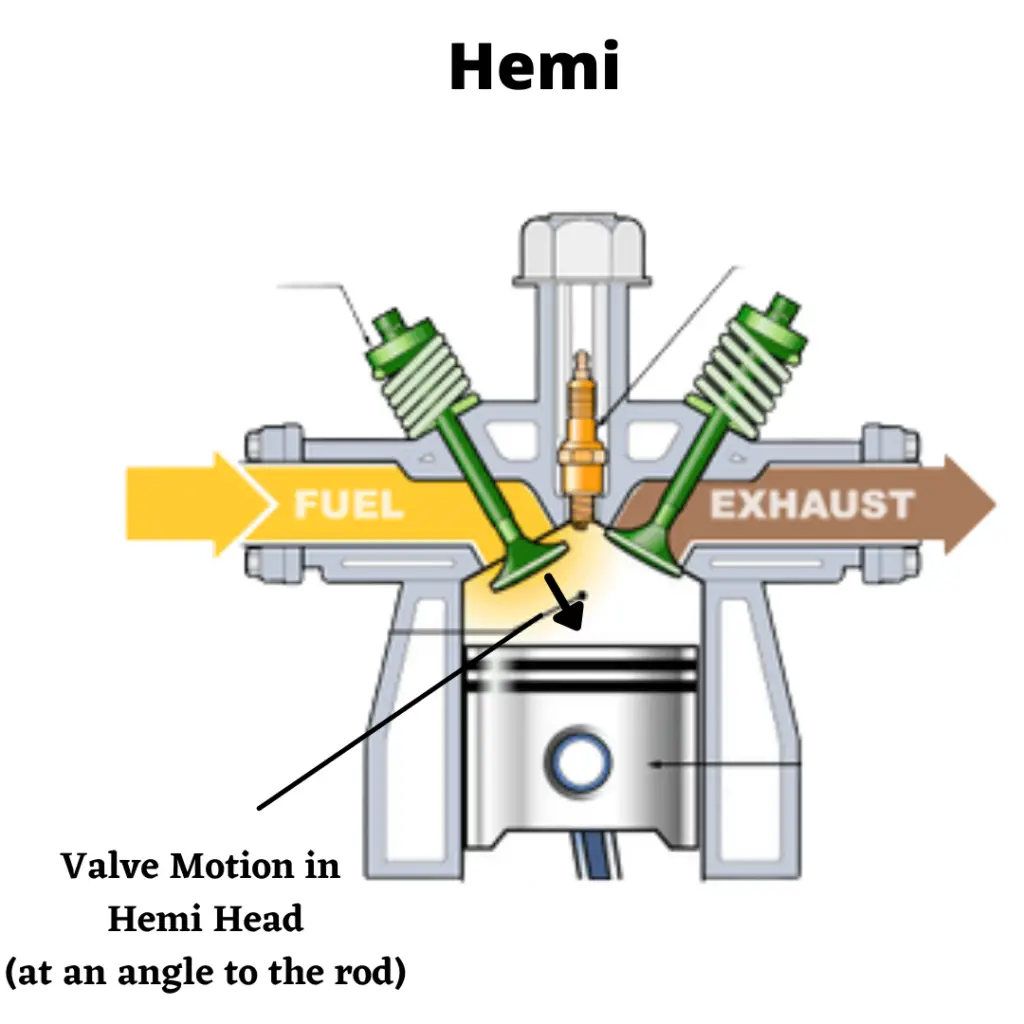
Now that you know about the difference in how they work, let’s see the impact of these differences.
When this whole process is going on, the valve should never touch the piston, ever! That will cause engine failure.
There has to be a clearance maintained between the valve and the piston at all times. In these small engines, you need at least 0.030” clearance between the piston and the valve head.
Since valves in the Hemi engine are moving at an angle to the piston, if you increase the lift or duration of the cam or make any changes that push the valves further down for a longer duration, you’ll reduce the clearance much faster in an hemi as compared to the non-hemi.
That is why, if you are going to make extensive modifications, it’s best not to choose hemi.
You can still do some machine work on the piston head to maintain the clearance on the hemi engine, but then that will increase your cost and time consumption. It’s better to choose a non-hemi and do some porting work instead.
So then why is hemi better for out-of-the-box use?
The ports in the hemi engines allow for a smoother pathway for the air-fuel mixture to come in and the exhaust gas to go out as compared to the non-hemi engines. This helps the Hemi engine to make slightly more power and torque in stock condition.
Other Parts
The cylinder head is the biggest difference between the 2 engines, but comparing other parts of a stock hemi to a stock non-hemi, the non-hemi have a dished piston while the hemi has a flat piston.
Compression height is shorter in hemi, valve stems are thinner in non-hemi, pushrods are smaller in hemi. But none of these differences are as vital to their performance as the cylinder head.
In terms of appearance, you will notice a difference in the air filter box but again this won’t make any significant difference in performance.
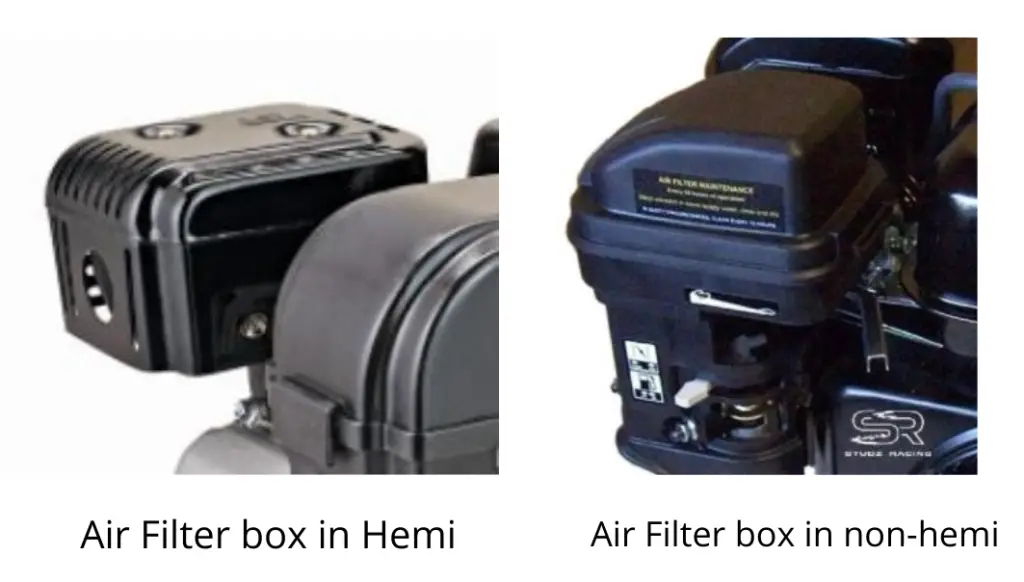
Performance Parts and Availability
Performance parts are widely available with Predator 212, mainly because of how popular they are, it is lucrative for manufacturers to make after-market parts for people looking for more power and speed.
For mild modifications like air filter upgrades, exhaust upgrades, etc, parts for both Hemi and Non-Hemi are easily available but there is a difference in parts availability between hemi and non-hemi if you want to make wild modifications. Here are some of the differences:
Valve springs
| Spring Weight | Hemi | Non-Hemi |
| 18 Lb | Available (but different from the one’s used in GX200 or Non-hemi) | Available |
| 22 Lb | Available | Available |
| 26 Lb | Available | Available |
| 36 Lb | Not Available | Available |
And this is your 2nd major issue with Hemi engine modifications, you can’t go over 26 Lb valve spring without some machine work.
The holes in which the springs go in are too small in hemi to fit in 32 Lb.
Also, the 18 Lb springs are specially made for hemi engines, the longer 18Lb springs made for GX200 will bind very quickly if put on a hemi 212 engine.
For non-hemi you can have even more spring weight than 36 Lb, but you might have to change the rocker arms after 22 Lb.
Camshaft
Out of the box, both cams are pretty much similar in terms of lift and duration, but the hemi cams are rated better for higher rpm and higher spring pressure (for stock cams).

You can find performance parts for both the engines on dynocam’s website, but the cams with more lift will require bigger springs and therefore require machine work, bigger valves, etc on hemi.
You have to be very careful with the clearance on the hemi. It’s best to call your supplier and explain your exact situation before you order bigger cams. You can however use Mod2 cams (most popular cam upgrade) on hemi without any difficulties.
Connecting Rod
ARC makes +0.040″ rods for non-hemi and +0.20″ for both hemi and non-hemi.
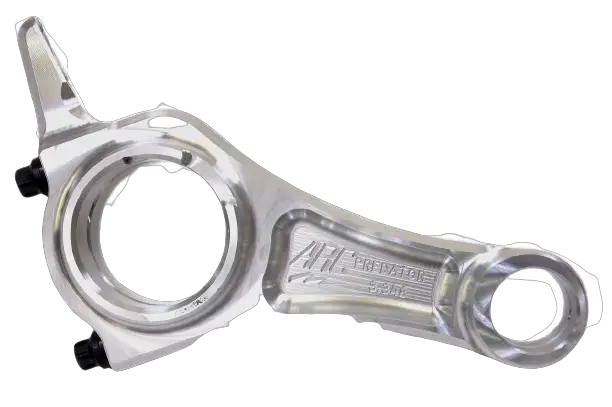
You might need to make some changes to the size of the head gasket and piston to prevent it from popping out of the deck.
The +0.040″ rods on hemi will cause clearance issues. Therefore are not available.
Mods for Other Parts
The billet flywheels are different, the rocker arms in hemi are restricted to 1.2 ratios whereas you can get a 1.3 ratio for Non-Hemi.
In general, any modification that will risk a clash between valves and piston will not be available for Hemi engines.
Summary
The comparison in part upgrade makes it really clear, if you’re planning on making a lot of modifications, then non-hemi is a much better option.
Especially if you can do some porting on them, choose Non-Hemi. If you’re going to run it out of the box, with no modifications then choose the Hemi engine.
Even though Predator engines are highly popular and most people never look past them, there are some other amazing engines in the market such as Tillotson 212, which can challenge a modified Predator 212.
If you’re still deciding on which engine to buy, check our list for the best engines for go-karts.



